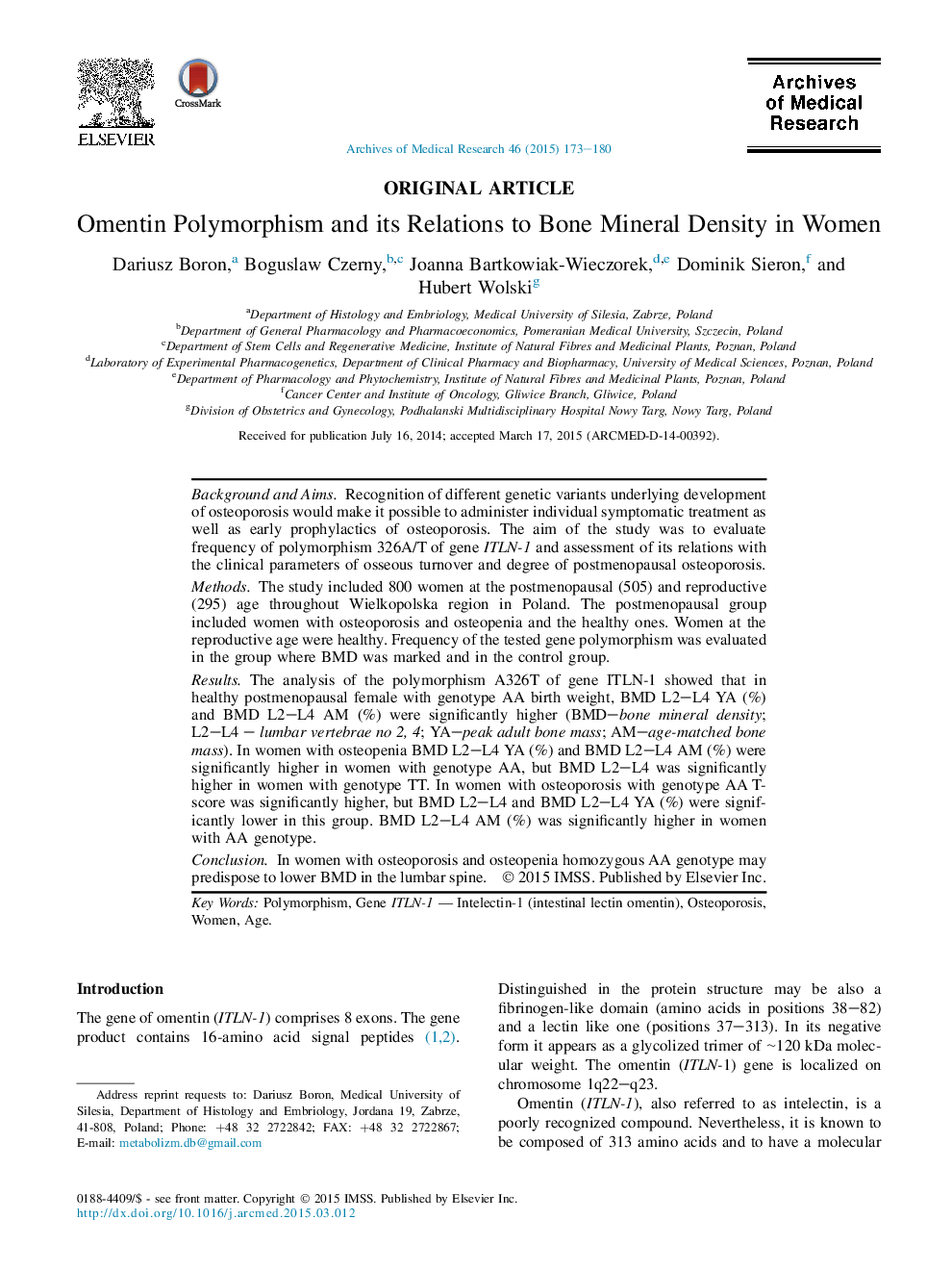| Article ID | Journal | Published Year | Pages | File Type |
|---|---|---|---|---|
| 3446448 | Archives of Medical Research | 2015 | 8 Pages |
Background and AimsRecognition of different genetic variants underlying development of osteoporosis would make it possible to administer individual symptomatic treatment as well as early prophylactics of osteoporosis. The aim of the study was to evaluate frequency of polymorphism 326A/T of gene ITLN-1 and assessment of its relations with the clinical parameters of osseous turnover and degree of postmenopausal osteoporosis.MethodsThe study included 800 women at the postmenopausal (505) and reproductive (295) age throughout Wielkopolska region in Poland. The postmenopausal group included women with osteoporosis and osteopenia and the healthy ones. Women at the reproductive age were healthy. Frequency of the tested gene polymorphism was evaluated in the group where BMD was marked and in the control group.ResultsThe analysis of the polymorphism A326T of gene ITLN-1 showed that in healthy postmenopausal female with genotype AA birth weight, BMD L2–L4 YA (%) and BMD L2–L4 AM (%) were significantly higher (BMD–bone mineral density; L2–L4 – lumbar vertebrae no 2, 4; YA–peak adult bone mass; AM–age-matched bone mass). In women with osteopenia BMD L2–L4 YA (%) and BMD L2–L4 AM (%) were significantly higher in women with genotype AA, but BMD L2–L4 was significantly higher in women with genotype TT. In women with osteoporosis with genotype AA T-score was significantly higher, but BMD L2–L4 and BMD L2–L4 YA (%) were significantly lower in this group. BMD L2–L4 AM (%) was significantly higher in women with AA genotype.ConclusionIn women with osteoporosis and osteopenia homozygous AA genotype may predispose to lower BMD in the lumbar spine.
